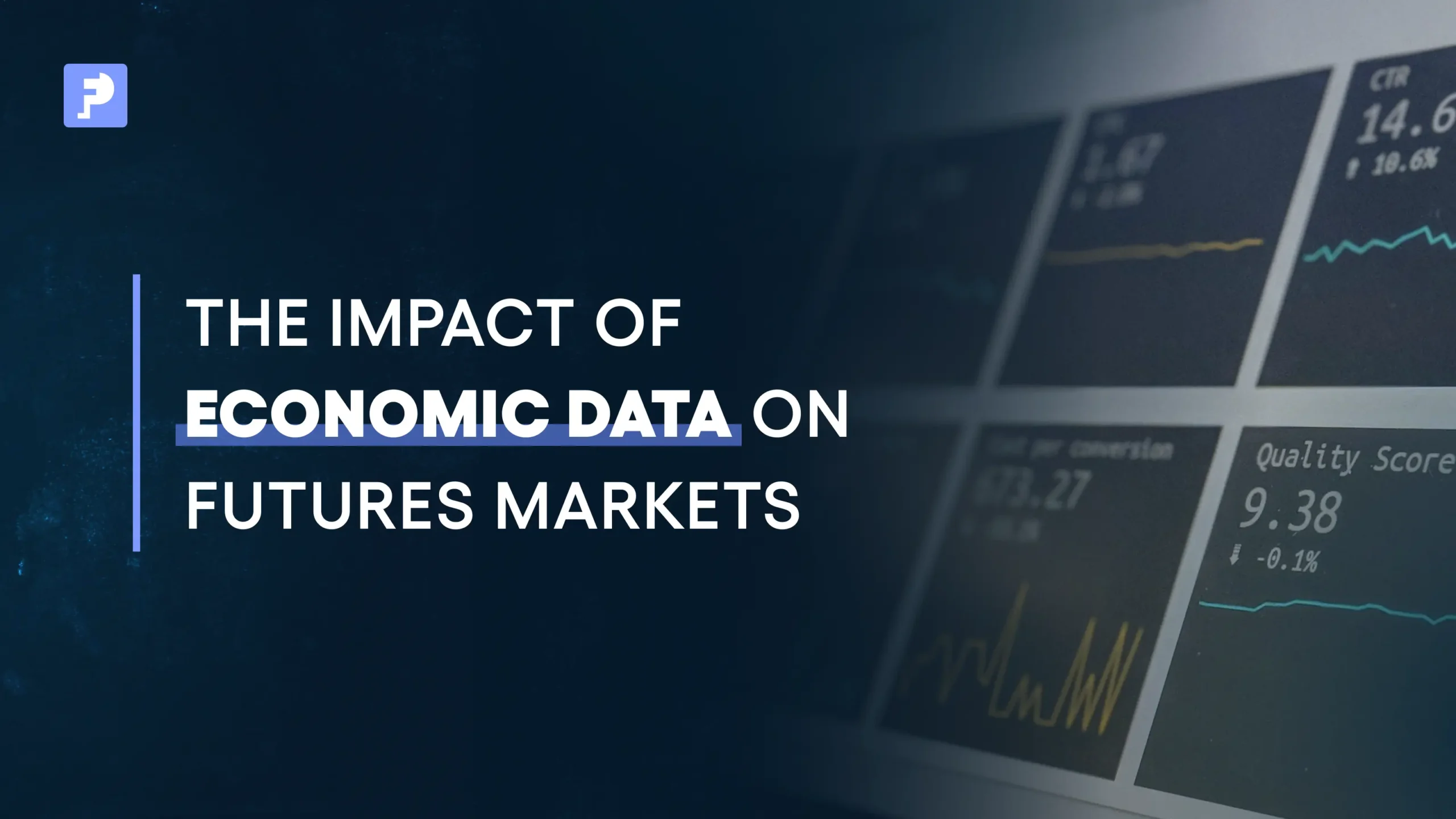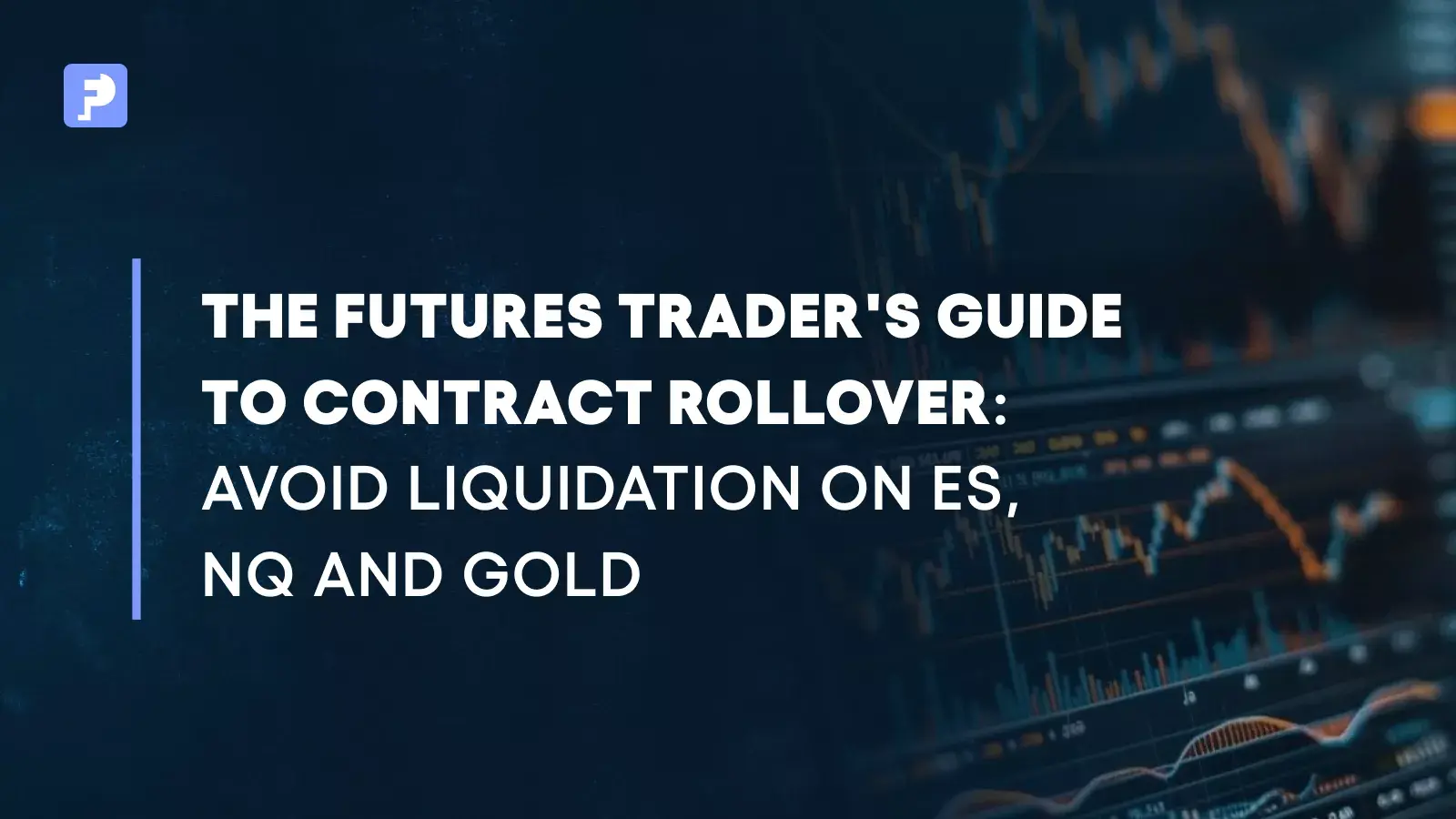
The Impact of Economic Data on Futures Markets
Economic data (also known by traders as new events) is the heartbeat of financial markets, offering critical insights into the health and direction of economies. For futures traders, this data is essential, as it directly impacts short-term market movements and shapes trading strategies.
In this article, we will explore how economic indicators influence futures markets, discuss the pivotal indicators traders should monitor, and examine the role of proprietary trading firms in managing risk amid volatile conditions.
Understanding Economic Data in the Context of Futures Trading
Economic data consists of various statistics that reflect the current status and potential future direction of an economy. These indicators help traders gauge market sentiment and adjust their positions accordingly. Futures markets, which include contracts on commodities, equities, and indices, are especially sensitive to such data.
Categories of Economic Indicators
Economic indicators are broadly classified into three categories:
- Leading Indicators: These provide a glimpse into future economic activity. Examples include stock market trends and manufacturing orders, which help traders anticipate shifts in market momentum.
- Lagging Indicators: These metrics confirm trends by showing the outcomes of economic events. For instance, unemployment rates and other post-event statistics can validate a previous market movement.
- Coincident Indicators: These indicators provide a snapshot of the current state of the economy. Measures like payroll employment and retail sales fall into this category, offering real-time insights into economic performance.
Each category plays a unique role in shaping your trading strategy. By understanding them, you can better assess whether current market conditions will continue or reverse.
Key Economic Indicators Impacting Futures Markets
Several economic indicators have a profound effect on futures markets. Let’s break down the most influential ones that futures traders should follow closely.
Inflation Data and the Consumer Price Index (CPI)
Inflation reports are critical for anticipating changes in monetary policy and overall market sentiment. The Consumer Price Index (CPI) is one of the primary measures of inflation, tracking the changes in the cost of a basket of goods and services over time. Impact on Futures Markets:
- Lower-than-expected Inflation: Often leads to lower interest rate expectations. This can boost bullish sentiment, particularly in equity futures like the S&P 500 or NASDAQ.
- Higher-than-expected Inflation: May signal impending rate hikes, which can dampen market enthusiasm and lead to bearish trends.
If you understand the implications of inflation data, you can benefit from anticipated moves in interest rates and adjust your strategy accordingly.
Employment Data and the Non-Farm Payrolls Report
Employment reports, notably the U.S. Non-Farm Payrolls (NFP) report, wield significant influence over market sentiment. These reports detail job creation and employment trends across various sectors. Impact on Futures Markets:
- Strong Employment Numbers: Traditionally indicate robust economic activity, which can trigger a bullish response in futures markets. However, there is a twist; high employment might also raise concerns about rising inflation, prompting caution.
- Weak Employment Data: May lead to a sell-off in futures, as traders fear slower economic growth and reduced consumer spending.
Understanding these dynamics allows traders to anticipate periods of heightened volatility and plan entry and exit points more effectively.
GDP Growth and Retail Sales
GDP reports measure the overall economic activity and provide an aggregate view of the economy’s performance. When GDP growth exceeds expectations, it can instill confidence in the markets, while disappointing figures may lead to cautious trading behavior. Impact on Futures Markets:
- Robust GDP Growth: Can fuel optimism, particularly in equity and commodity futures, due to anticipated higher demand.
- Slower GDP Growth: Often results in a cautious approach among traders, leading to reduced activity in markets sensitive to economic cycles, such as crude oil and industrial commodities.
Other Influential Indicators
In addition to the above, traders should consider other key indicators:
- Producer Price Index (PPI): Measures inflation from the perspective of producers. Rising PPI can signal increasing costs that might eventually be passed on to consumers.
- Retail Sales Data: Offers insights into consumer spending—a critical driver of economic activity. High retail sales figures can indicate strong demand and support bullish positions in various commodity futures.
- Trade Balance: Reflects a country’s net exports. A positive trade balance may bolster the national currency, whereas a negative balance might weaken it, impacting commodity prices.
- Interest Rates: Directly influence the cost of borrowing and consumer spending. Shifts in central bank policies regarding interest rates can lead to significant adjustments in futures pricing.
How Economic Data Influences Futures Markets
Economic indicators impact futures markets through several channels. Each data release can create a ripple effect that drives investor sentiment, trading volumes, and ultimately, price movements.
Shaping Investor Sentiment
Economic data often serves as a barometer of market sentiment. Positive indicators can boost confidence, leading traders to increase their exposure in the hope of capturing gains from upward market trends. Conversely, negative data can trigger uncertainty, prompting traders to adopt more defensive positions.
- Bullish Signals:
- Strong employment figures
- Robust GDP growth
- Low inflation numbers
- Bearish Signals:
- Rising inflation pressures
- High trade deficits
- Weak retail sales
These sentiment shifts can result in increased volatility, particularly during high-impact data releases.
Influencing Supply and Demand Dynamics
Futures markets, especially those for commodities, are directly affected by supply and demand factors. Economic indicators provide clues about future demand: a thriving economy can lead to increased consumption of oil, metals, and agricultural products. A downturn, on the other hand, may lower demand and lead to price declines.
Traders must monitor these signals closely to position themselves advantageously before the market fully reacts.
Affecting Monetary Policy Expectations
Inflation and employment data are central to the decision-making process of central banks. Speculation about future interest rate movements often drives market behavior in futures contracts. For example:
- Lower Inflation Expectations: May result in continued accommodative monetary policies, supporting higher asset prices.
- Higher Inflation Expectations: Could prompt rate hikes, leading to increased costs of borrowing and a potential slowdown in economic activity.
Understanding these relationships is crucial for aligning trading strategies with macroeconomic trends.
Tactical Considerations for Futures Traders
In futures trading, as with trading in general, timing and strategy are paramount. Traders need to consider both the timing of economic data releases and the potential market reactions.
Preparing for Economic Data Releases
Anticipating the release of important economic reports can provide a strategic edge. Here are some practical tips:
- Stay Updated: Use economic calendars to track key data release dates. Follow credible news sources and financial analysis platforms.
- Analyze Consensus Estimates: Compare current forecasts against historical data to identify potential surprises. Monitor analyst opinions to gauge market consensus.
- Set Up Alert Systems: Set yourself a reminder to stay informed about the most important real-time data releases.
Adjusting Trading Strategies
After an economic data release, futures traders often need to adjust their strategies quickly:
- Scalping Opportunities: Utilize short-term techniques to capitalize on immediate volatility. However, do not trade on the news event, as some prop firms may restrict it.
- Swing Trading: Identify trends that emerge after the initial reaction and position for medium-term movements.
- Long-term Positioning: Use broader economic trends to support sustained positions in markets, particularly if the data indicates a lasting change in economic fundamentals.
Leveraging Technical Analysis
While economic data is crucial, technical analysis goes hand-in-hand with it. Combining both approaches can lead to more robust trading decisions:
- Chart Patterns: Look for common patterns, such as support and resistance levels, around key data release periods.
- Indicators and Oscillators: Use tools like the Relative Strength Index (RSI) or Moving Averages to confirm trends suggested by economic data.
- Volume Analysis: Monitor trading volumes to assess the strength behind market moves following major economic releases.
The Role of Proprietary Trading Firms in Managing Risk
Given the sensitivity of futures markets to economic data, risk management is more important than ever. Proprietary trading firms, or prop firms, offer significant advantages that help traders navigate volatile markets.
Advantages of Prop Firms
Prop firms provide resources that individual traders might not have access to, such as:
- Access to Larger Capital: Prop firms supply traders with substantial capital, allowing for larger positions and diversified trading strategies.
- Advanced Risk Management Tools: These firms often offer state-of-the-art systems including real-time data analytics. These resources enable traders to better anticipate market changes and adjust their strategies swiftly.
- Profit Sharing Models: The profit-sharing arrangements within prop firms align the incentives of both the trader and the firm. This structure encourages prudent risk management and the adoption of strategies that optimize both profit potential and safety.
If you would like to learn more about effective risk management and get some actionable tips, check out our article on how futures prop firms can help you manage risk.
Strategic Implementation: Using Economic Data to Shape Trading Strategies
Incorporating economic data into your trading strategy involves both preparation and strategic execution. Here are key steps for successful implementation:
- Monitor Key Economic Calendars: Stay informed about upcoming data releases such as CPI, employment reports, GDP figures, and retail sales. An economic calendar is an essential tool for any futures trader.
- Develop a Pre-Trade Analysis Routine:
- Review Historical Data: Understand past market reactions to similar data releases.
- Consider Market Context: Factor in geopolitical events or other economic news that might influence the impact of the data.
- Adjust Risk Parameters:
- Set Stop-Loss Orders: To mitigate potential losses amid high volatility.
- Adjust Position Sizes: Scale your trades appropriately, especially around major data releases.
- Integrate Technical and Fundamental Analysis: Combine the insights from economic data with technical indicators. This blended approach can provide a more reliable forecast of market movements.
Risk Management Approaches in Volatile Economic Environments
Risk management is a cornerstone of successful futures trading, especially when economic data releases can trigger rapid market moves. Here are some strategies to maintain a robust risk management plan:
- Diversification: Avoid overconcentration in a single market or asset class. Diversified positions can help cushion the impact of an unexpected economic announcement.
- Real-Time Monitoring: Utilize platforms that provide live market data and alerts. Quick access to updated information allows you to react immediately when conditions change.
- Stress Testing: Periodically simulate market shocks to assess how your strategy would perform under extreme conditions. Adjust your risk tolerance and stop-loss measures based on the outcomes.
- Continuous Learning: Markets evolve over time, and so should your strategies. Stay updated with recent economic trends, market analysis, and new risk management techniques.
Final Thoughts on the Influence of Economic Data in Futures Trading
Economic data remains a critical element in the arsenal of any futures trader. The interplay between key indicators—such as inflation reports, employment figures, and GDP growth—creates a dynamic environment where market sentiment can shift within moments. Traders who understand these factors are better positioned to anticipate changes and adjust their strategies accordingly.
Proprietary trading firms further enhance a trader’s ability to manage risk through access to substantial capital and advanced tools. Whether you’re trading on your own or leveraging the support of a prop firm, integrating thorough economic analysis into your trading strategy can provide an edge during both calm and turbulent market conditions.
In conclusion, futures trading is not just about executing trades—it’s about understanding the broader economic landscape. By carefully analyzing economic data, incorporating both fundamental and technical analyses, and utilizing advanced risk management strategies, you can turn volatile economic conditions into opportunities for profit. As you navigate the complexities of the futures market, let data be your guide and strategic planning your pathway to success.
All trading in FunderPro Futures takes place in a demo-style environment and in off-exchange futures.



